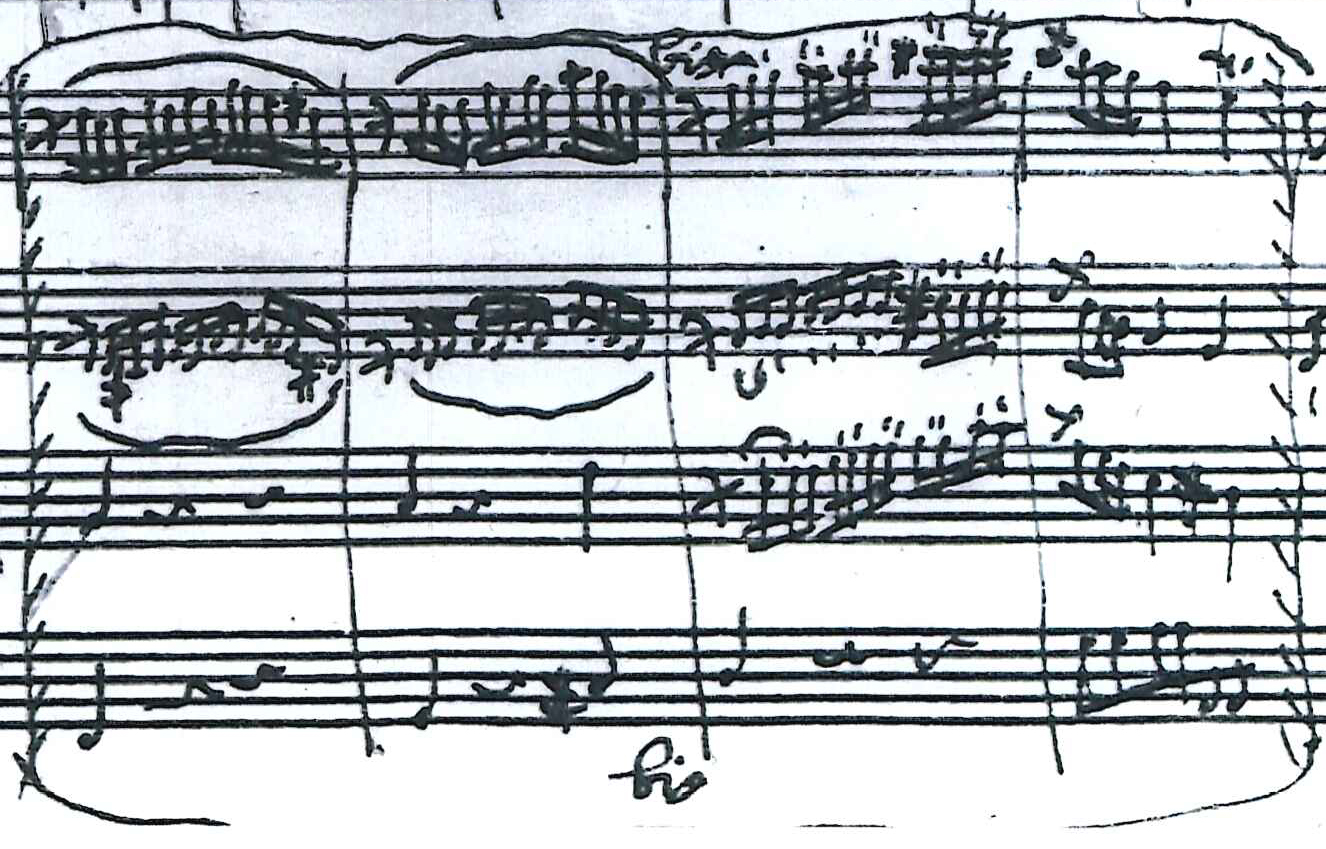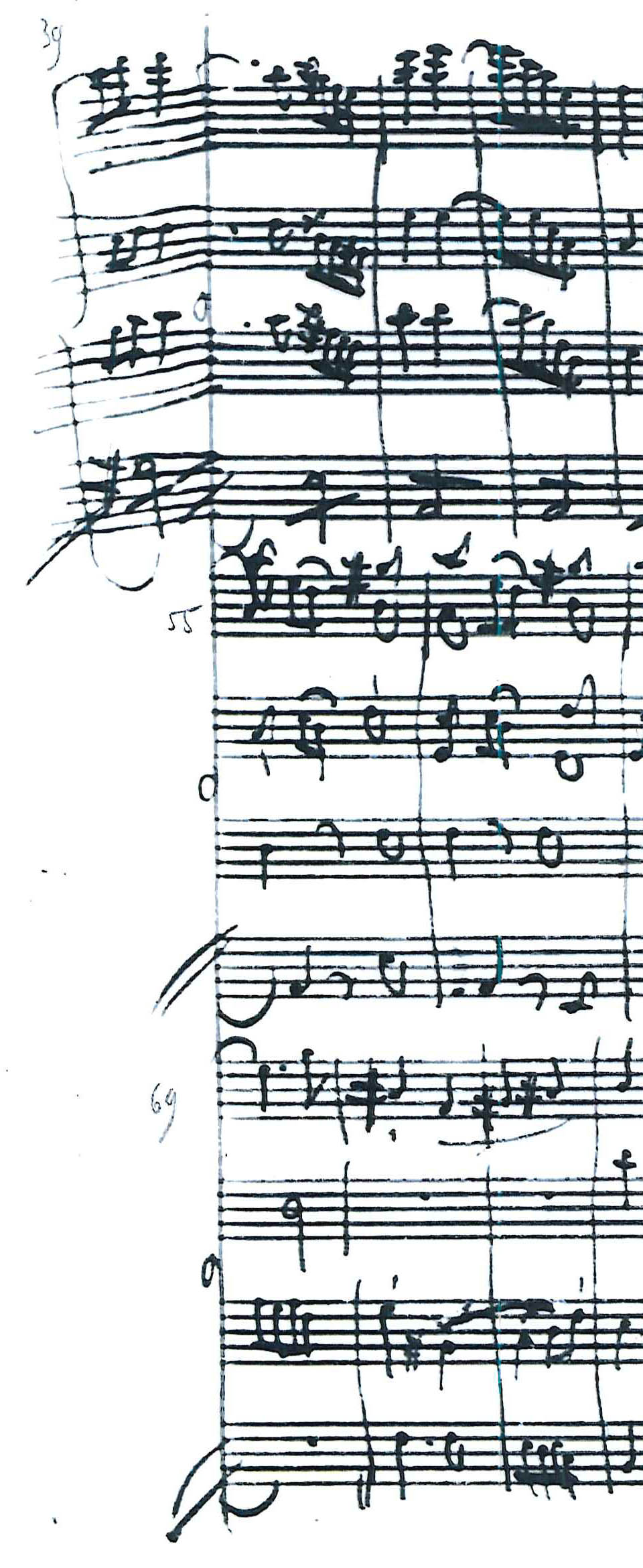 In conjunction with my Urtextausgabe of the well-known and much-played “Divertimenti”, K. 136–138, just about to be published, it became clear that Mozart’s own, unusually vague dating at the head of his autograph, “Salisburgo 1772”, cannot be entirely accurate. I’m assuming, rather, that he was already working on the composition of these three works in Milan from the late autumn of 1771, only then to finish them in Salzburg at the start of 1772. I’d like briefly to substantiate this hypothesis in this blog post.
In conjunction with my Urtextausgabe of the well-known and much-played “Divertimenti”, K. 136–138, just about to be published, it became clear that Mozart’s own, unusually vague dating at the head of his autograph, “Salisburgo 1772”, cannot be entirely accurate. I’m assuming, rather, that he was already working on the composition of these three works in Milan from the late autumn of 1771, only then to finish them in Salzburg at the start of 1772. I’d like briefly to substantiate this hypothesis in this blog post.
DATING. Mozart’s exceptionally generalised dating was obviously done later, a situation not yet properly described elsewhere. For the numeral “2” of “1772” is obviously “thickened”, indicating a correction. Since, unfortunately, we were not given access to the original manuscript, I had to work from poor copies, but Mozart probably wrote “1771” originally and then corrected it to “1772”:
HANDWRITING. Wolfgang Plath, the great Mozart scholar and impeccable authority on Mozart’s handwriting, accepted “as likely”, the conventional dating of the three divertimenti as coming from the “period ca. January-March 1772”, but declared regarding the appearance of the script in the 1st movement of K. 136, that this “could easily be placed within the wider proximity of K. 112” (Wolfgang Plath, Beiträge zur Mozart-Autographie II. Schriftchronologie 1770–1780, in: Mozart-Jahrbuch 1976/77, Salzburg, 1978, p. 147). That would mean Milan, ca. November 1771. And also explain the original, spur-of-the-moment notation of “1771”, not recognised at that time by Plath.
AUTOGRAPH. First of all, when the appearances of Mozart’s K. 136–138 scores are compared with his other typical scores, they look to be very singularly notated. Instead of using one of the normal contemporary string-quartet papers having a total of 10 staves, with 2 x 4 staves (2 blank staves), Mozart here inscribed all the staves of this music paper, rastral-lined with 12 staves. As a result, everything is particularly compactly written out, the notation itself is tight, small, hasty. Lacking is the usual, otherwise spatially generous layout. Secondly, there are lots of corrections, and, uncommonly often, a heavily abbreviated notation; thus, for instance, Mozart does not notate immediately successive repeats, but in a manner to save space, he writes so-called “bis” directives, usually also circling the measure or measures to be repeated; “bis” means “twice” and serves as a marking and indication to the copyist in the event that sections are to be literally repeated:
Mozart had initially forgotten to notate measure 39 of K. 136’s third movement, adding it then into the left margin just before the accolade – a clear indication that he was copying existing material here and not just first inscribing newly composed material.
A longer passage of K. 138’s first movement (mm. 36–74) is also notated with a clearly sharper pen nib – that is, at another point in time than the preceding and following measures, indicating an interruption in the writing process.
MUSIC PAPER. Alan Tyson, the great Mozart scholar and impeccable authority on the music paper that Mozart utilised, dates the K. 136–138’s music paper to “Salzburg 1771”. All 12 folios are of Italian paper with the watermark “WZ 25”. This was the paper on which Mozart otherwise wrote merely the essential sections of his Serenata “Il Sogno di Scipione”, K. 126 (“The Dream of Scipio”), dated: Salzburg, April to August 1771 (see NMA, preface), premiere of the work, though, only in 1772.
CONCLUSION. Putting all these observations together, it is more than obvious that, contrary to previous assumptions, Mozart was not only working on the composition of his three “Quartet Divertimenti”, K. 136–138, in Salzburg after his return from his second Italian trip, thus, in “January to March 1772”, but also in Italy itself at the end of 1771. On his departure from Salzburg, he had taken along with him to Milan the music paper rastral-lined with 12 staves (that is, the remnants of K. 126’s paper), and then after completing an actual commission there in the fall of 1771 – namely, the composition of the Serenata teatrale “Ascanio in Alba” (K. 111) – used the time to compose, amongst other things, the jocose divertimenti. He presumably first wrote down all kinds of sketches and drafts and then inscribed the whole thing compactly on paper, since all he had left over were just 12 folios of paper. Most of this “copying” activity would likely have occurred in Salzburg after his return home, which is reflected in the noticeable change in the handwriting from the first movement of K. 136, to the rest of the autograph’s sections, probably also explaining the “Salisburgo” (instead of “Milano”) in his dating.
Last but not least, Mozart’s biographical situation at the end of 1771 supports this dating hypothesis, derived solely from the autograph findings and the music paper used: After finishing his “Ascanio”, K. 111, that is, he had plenty of free time in Milan in the late autumn of 1771. It wasn’t until the beginning of December that he went back to Salzburg; Leopold Mozart wrote home on 28 September 1771: “Our holiday and diversion is now beginning […] because Wolfg: had already finished everything on Monday” (letter No. 247). Thanks to this pleasant “holiday and diversion”, the three wonderful “Divertimenti”, K. 136–138, were thus essentially composed in northern Italy, which can be heard in every note.


